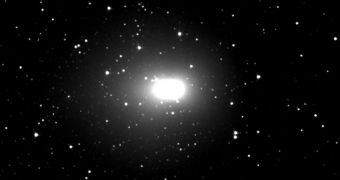At 10:01 am EDT (1401 GMT) today, November 4, the EPOXI mission finally managed to catch up with the Comet Hartley 2 in the inner solar system, concluding a months-long chase that took the spacecraft over millions of miles of space in pursuit of its target.
The probe passed very close to the space object, at an estimated distance of 435 miles, or 700 kilometers. This made it very easy for the spacecraft's powerful instrument suite to capture images of the comet, and send them back to Earth for processing and validation.
This new flyby represents only the fifth time ever when a probe does a flyby of a comet. The Deep Impact spacecraft that forms the EPOXI mission already visited the comet Tempel 1 in July 2005.
At the time, it released an impactor into the surface of its target, and analyzed the resulting plume for more data on what cometary nuclei are made of, Space reports.
While still in mid-flight, the probe was reassigned to this new mission, and set on a course that had it meet up with Hartley 2 today. Datasets obtained in this new flyby will be compared with info derived from the four other encounters.
The main goal of such studies is to gain a better understanding of the inner structure and behavior of comets, and also to collect more knowledge on the formation of the solar system.
“This comet is unlike any we've visited before, and we don't know what we're going to find,” said before the flyby University of Maryland professor and principal mission investigator Mike A'Hearn.
Mission control estimates that the probe will relay back some 118,00 images following the flyby. The data will arrive on Earth via the newly-refurbished Deep Space Network antenna, Space reports.
EPOXI will continue to snap photos of the comet for the next three weeks, as it heads out into space. Two color camera telescopes and an infrared spectrometer are focused on Hartley 2, continuously snapping away new images of its central region.
“This is going to give us the most extensive observation of a comet to date,” explains the project manager of the mission to Hartley 2, Jet Propulsion Laboratory (JPL) expert Tim Larson.
EPOXI's name comes from two extended mission components. The first is the extrasolar planet observations, called Extrasolar Planet Observations and Characterization (EPOCh); and the second is the current flyby, called the Deep Impact Extended Investigation (DIXI).
In addition to EPOXI, a large number of space- and ground-based telescopes are also trained on Hartley 2 as well, including the Hubble and the Wide-fields Infrared Survey Explorer (WISE) telescopes.

 14 DAY TRIAL //
14 DAY TRIAL //